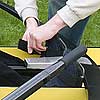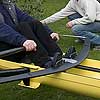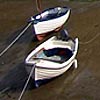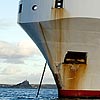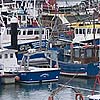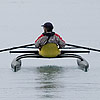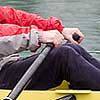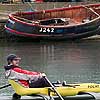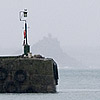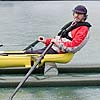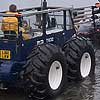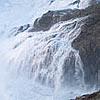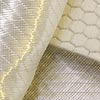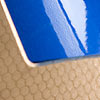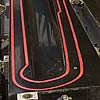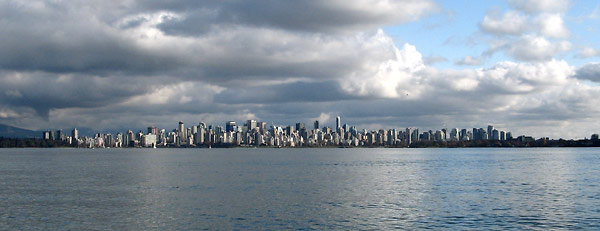|
The ROCAT is a rowing catamaran primarily designed for open water. It is fast and absolutely stable and easy to transport – these (normally incompatible) features suddenly make fast rowing accessible, safe and fun. This website describes the boat, its new (patented) sliding rigger and swingarm rowing mechanism, and the advanced composites technology used in its construction. The archives also document the 6-year 'idea to market' development of the ROCAT. |
|
|
The galleries have pictures of the boat in action, and there are some clips in the video section, including one of proto 2 undergoing trials in a very rough sea – and here is a bumpy sea wallpaper – if you like it, please pass it on. |
|
|
latest news – do email us with your comments and/or questions
|
|
|
4 April 2007 We have done well! With resources that have been absolutely miniscule by industry standards, we have converted an idea into a bloody good product – the next generation of rowing boat which provides an unparalleled combination of speed, stability and transportability. Furthermore, along the way, we have developed ground-breaking advanced composites technology, which was runner-up to a multi-billion Euro company for a major international composites innovation award.
But we have not done well enough! Small-scale production has proved unviable at the current pricing levels, and I have been unable to raise the finance needed to move forward into proper production – I have therefore decided to put the ROCAT project
The project has a surprisingly large number of dedicated followers – the site averaged 90,000 hits a month at the end of last year – thanks to everyone who has given his or her support and encouragement. |
|
|
4 February 2007 I've been thinking about the ROCAT's relationship to conventional sliding-seat monohull rowing, and I can see an interesting parallel in the world of bicycles. In the late 1970s, some guys in northern California began modifying their bikes to be able to ride up in the hills. When Specialized produced the first mass-produced mountain bike in 1981, the racing road bike fraternity looked askance at this strange contraption, but mountain bikes now outsell road bikes many times over. Specialized’s first advertisement for their new ‘Stumpjumper’ said, “It’s not just a new bicycle, it’s a whole new sport.” That is exactly the way I feel about rowing and the ROCAT – this could be the mountain bike of the rowing world. |
|
|
27 January 2007 from our Vancouver correspondent: A few minutes later I stopped rowing and leisurely took out my camera and took this picture (sorry about the tilted horizon but there was a lot of motion out there):" ... 1) a rough sea in English Bay with the Vancouver skyline in the background - photo by Richard Copley |
|
|
15 January 2007
JEC is the World's foremost annual exhibition dedicated to composites.
Obviously disappointed not to have won, but to be runner up to a company the size and stature of Mavic is not too bad! |
|
|
11 January 2007 Clearly, the term 'back injury' covers a multitude of back-related ailments. On the rigger page, I boldly claim that the ROCAT rigger "practically eliminates the risk of back injury (to which rowers are prone)". Unsure of my ground, I stopped short of saying that you could actually row the ROCAT with an injured back. ... 1) if Anthony had known that he would, one day, be my nurse maid, would he have joined the company; 2) unable to lift, or reach my feet, Anthony straps me in; 3&4) with my back supported, I am able to 'row' a full stroke ... photos by Freya Laughton |
|
|
1 January 2007 The beginning of a new year is traditionally used to take stock and refresh one's plans for the future. I was warned that the transition between development and production would not be easy, and so it has proved. The first three boats took far too long to make because we had to spend so much time designing and constructing the production infrastructure. However, we are delighted that there are now two ROCATs in customers' hands, and we look forward to demonstrating the third to interested parties in the UK before long – if you are one of those, please let us know. |
|
|
25 December 2006 A picture of 'Mousehole lights' (which look better in the flesh) – happy Christmas! |
|
|
17 December 2006 Yesterday, I went for a pleasant 8.9 mile row over to the pretty little fishing village of Mousehole (pronounced mowsel). On the way I passed the Anglian Princess – this is an enormous ocean-going tug which just sits in Mount's Bay awaiting a call to assist any ship in distress within range. As I rowed past the Anglian Princess, I was reminded of a another tug which offered assistance to a coaster on a particularly dark and stormy night 25 years ago on Tuesday. The ship was the Union Star and, having lost its engine 8 miles upwind of the south Cornish coast, it was in serious trouble. For reasons best known to the captain, he declined the offer of help and his ship was driven on to the the rocky cliff near Lamorna. The loss of the 8 people on board would have been sad enough, but the Penlee lifeboat launched in atrocious conditions to try to save the crew of the Union Star, and it was also lost with of all 8 hands – here is a contemporary BBC report and here is a good account of the tragedy in Wikipedia. I have never before, nor since, experienced the palpable communal grief that pervaded the area for days following the tragedy – all those quite extraordinarily brave men, who comprised the crew of the 'Soloman Browne', came from Mousehole ... CL ... 1) Mousehole; 2) Emergency Towing Vessel, Anglian Princess - 67m - 1,800t - 17kts |
|
|
10 December 2006 More gales and storms were forecast today, but we just got rain, so I decided to give the demonstrator its maiden outing. We needed some pictures of the boat on the water, so my daughter volunteered to come along and take some. We generally launch out of Penzance harbour but, for a change, we went over to the neighbouring town of Newlyn, which is a very active fishing harbour ... CL 1) the smaller boats don't go out on Sunday, so the harbour was full; 2) the flatest water I've been on for a long time; 3) this picture shows the novel ROCAT stroke quite well – the arms are straight, and your hands stationary during the power stroke, while you heave with your feet, pushing against the seat back;4) I think Newlyn has the highest fish landings in Britain, but the European Union regulations and controls on fishing give UK fishermen a very hard time – the sign in the background relates to this; 5) the data from the tidal gauge beside the lighthouse is used as the tidal datum in the drawing of Admiralty charts – St Michael's Mount is just visible in the background; 6) the hulls blend nicely with the water – we will probably change the colour scheme to something more photogenic before we take it upcountry for demonstrations; 7) the maritime rescue service in the UK is run by the RNLI (Royal National Lifeboat Institution) and it is 'manned' by volunteers and entirely funded by donations – here the 'Inshore Rescue Boat' is being launched for a practice ... photos by Freya Laughton |
|
|
3 December 2006 Gales and storms frequent West Cornwall in the winter, and we've just had a good one. Gusts of 90mph were recorded on the Isles of Scilly, but only about 60+ here. Went over to Gurnards Head to have a look, and lost my specs to the breeze for my pains! Unfortunately, I failed to capture one wave which appeared to engulf the whole headland (I think the top stands about 65m [200ft] above MHW, by the way). The seatdeck is made of a clever material which is chopped strand glass with a built-in resin infusion medium – it's fairly basic, but just right for the purpose; we do, however, use some carbon to reinforce the seat back. ... 1) Gurnards Head in a gale; 2) biaxial non-crimp glass fibre, with Soric resin infusion medium; 3) diagram of crimped woven yarn; 4) Anthony testing the strength of a ROCAT hull |
|
|
29 November 2006 We have finished making the hull 'plugs'. Although they cost a lot in materials and time (delaying the production of the next batch), it made sense to produce them now with the refurbished hull mould in its best condition. Now, if anything happens to the hull mould, or we need a second one (which we will do as rate of production increases), it will be a relatively simple matter to pull another mould off these reference plugs. ... 1) plugs taken off the refurbished hull mould. |
|
|
26 November 2006 Richard Copley took this picture of the Vancouver skyline from ROCAT number two. |
|
| posts before this are on the archive pages | |
|
© ROCAT Ltd – website designed by Kim Laughton |
|

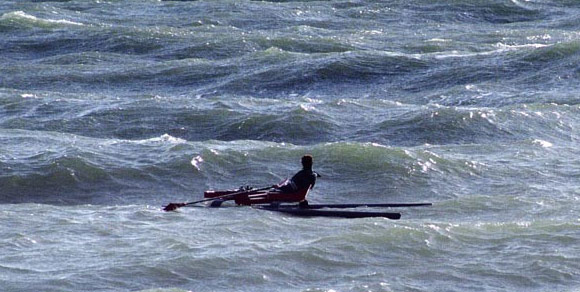
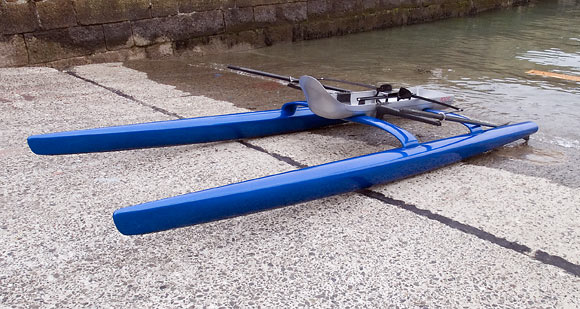
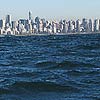
 Strangely, considering our tiny firm was up against companies of all sizes, from all over the world, we are finalists in the 'Sports and Leisure' category of the JEC Innovation Awards!
Strangely, considering our tiny firm was up against companies of all sizes, from all over the world, we are finalists in the 'Sports and Leisure' category of the JEC Innovation Awards!
